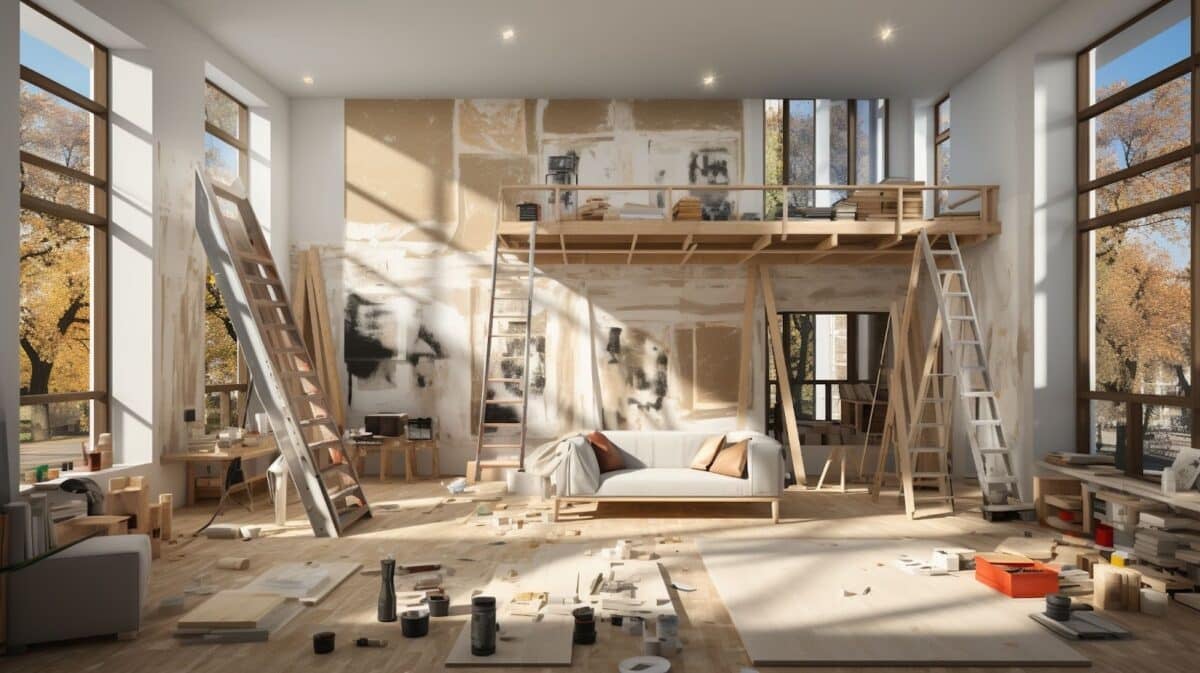What does BRRRR mean? Hint: it does not mean you’re cold—it means your real estate game is heating up! If you’re just getting started as an investor, the BRRRR method might be your best friend. It’s a well-defined, tried-and-true investment strategy that offers the best opportunity to build passive income through real estate. Since BRRRR is a pretty lengthy acronym, I’ll walk you through the step-by-step instructions to understand what it means and how to use the BRRRR strategy.
What Is the BRRRR Method?
“BRRRR” is an acronym for buy, repair, rent, refinance, and repeat. It can be done by anyone who can purchase a property, allowing investors to build equity immediately after renovating or repairing it by doing a cash-out refinance. Plus, the exact process can be repeated over and over, massively increasing your equity and investment portfolio.
The price of rent has jumped 30.4% nationwide between 2019 and 2023, so renting out a property is likely to be profitable. However, learning as much as possible before diving into any real estate investing strategy is always important. To find out if BRRRR is right for your next project, check out Kiavi’s free Breaking Down BRRRR e-book below. It covers the method’s pros and cons, tips for getting the right loan for your project, and even the best home rehab trends to attract high-income tenants.
Why the BRRRR Method Is an Excellent Investment Strategy
BRRRR investing enables you to build a portfolio without buying properties in cash. Because you will do a cash-out refinance once the property has been renovated and leased, you’ll make a quick profit that you can use to reinvest in another property while enjoying the advantages of owning a rental.
When done correctly, the BRRRR method can grow your net worth, generate passive income, and eventually lead to financial independence by enabling you to own and rent real estate uniquely and continuously. Here are some of the more specific pros and cons of using the BRRRR strategy to invest in real estate:
| Pros | Cons |
|---|---|
|
|
|
|
|
|
|
|
|
|
How to Use the BRRRR Method
Let’s take a closer look at the BRRRR, meaning going through it step-by-step. While the process is relatively simple in theory, finding the right property, renovating, financing, and managing a rental can be challenging—even for experienced real estate professionals. Let’s dig into each part.
1. Buy

For the BRRRR method to be profitable, you have to find the right undervalued property. Look for homes you can do low-cost improvements on to increase their value, which will increase your equity in step 4. The more discounted a home you can secure, the more equity you’ll have at this step in the process.
Also, look for properties likely to rent out easily and quickly. For example, condos or apartments near a university will be in high demand. Once you’ve found an undervalued property, it’s time to consider the best option for financing. The typical finance options for the BRRRR method are as follows:
- Hard money loans: These loans are typically short-term and come from a private, non-bank lender. The application process for hard money lenders differs from a typical mortgage; the lender will prioritize the property’s investment potential over your credit. Interest rates are generally much higher than a typical mortgage, generally between 10% and 18%.
- Cash: This means that you would not use any financing and would simply pay for the property entirely in cash.
Rule of 70%
A smart investment rule of thumb is the Rule of 70%. This rule says you should only spend 70% of the property’s after-repair value (ARV) minus repair expenses. For example, if you’re looking at a $400,000 investment property that requires $80,000 of repairs and renovations, you shouldn’t spend more than $200,000 on it. Ideally, the remaining 30% can be used on closing costs and realtor commissions while still leaving a healthy profit leftover.
The formula for the 70% rule looks like this:
70% of the ARV – estimated repair costs = Maximum price for the property
2. Rehab

The rehab or renovation part of the process is the part that requires the most elbow grease—but not necessarily your own! Focus on renovations and repairs with the lowest costs that will make the property attractive to tenants. You should know how much you have to spend on repairs after purchasing the home.
The rehab process has three main parts:
- Finding a trustworthy contractor: You’ll need a professional contractor with experience with the types of repairs and renovations you need. Ask other investors and realtors for their recommendations, and then build a relationship with a contractor you can (hopefully) use again.
- Staying on schedule and on budget: Renovations always take time and money. Plus, the longer a renovation takes, the higher your carrying costs. Keeping your project on track is possible, but it takes plenty of work.
- Maximizing your ROI: Make sure you choose the renovations that will have the best ROI and set the property up for long-term success.
3. Rent

If you were doing a fix-and-flip, this is the time you would sell the home. However, with the BRRRR method, this is when you turn your property into a cash-generating asset by finding tenants and renting it out.
You will have to move relatively quickly here because, at this point, your expenses will likely be chewing a hole in your wallet. Make sure you analyze your cash flow thoroughly as you price your new rental. You could hire a property management company to market your property and screen renters, or you can do it yourself with the sales, finance, and communication skills you’ve learned as a real estate agent.
4. Refinance

After your property has been refurbished and leased, do a cash-out refinance to turn the equity in the house into cash. This moment is when the BRRRR method literally proves its worth in profits! Not only does this save you money, but cash-out refinances also have a lower interest rate than a home equity loan or line of credit (HELOC). Plus, you can deduct the interest from your taxes.
5. Repeat

If you want to build a real estate investment portfolio, you can use the money from the refinance as a down payment on your next BRRRR property. This time, you’ll have more expertise, a growing network of contractors, and a cash-generating rental property under your belt. You might even use the BRRRR method to create a large rental portfolio. By choosing smart properties and the right renovations, the sky’s the limit.
Frequently Asked Questions (FAQs)
What is the 70% rule for BRRRR?
The rule of 70% is a general real estate investing concept that helps you maximize profits. It says you should only buy an investment property for 70% of its after-return value (ARV) minus any repair expenses. For example, for a home that needs $40,000 in work and has an ARV of $350,000, the maximum you should spend is $205,000.
What are the disadvantages of BRRRR?
The biggest disadvantage of the BRRR investing strategy is that you need a very specific type of property to take advantage of this method. In a competitive market, it’s easier said than done to find an undervalued property that doesn’t need six figures of renovations. Plus, finding a hard money loan can be difficult.
Is the BRRRR method worth it?
The BRRRR strategy can work exceptionally well, but there are a few challenges. If you purchase a property that is too expensive, the rent payments may not cover your costs. In addition, if you don’t do a thorough inspection, you may spend too much on the renovation and get less than planned out of the refinance. However, if you take each step carefully, the BRRRR real estate method can be one of the best ways to build an investment portfolio quickly.
Bringing It All Together
The BRRRR method is an excellent real estate investing strategy that can help agents become investors, build equity, and scale their investment portfolios quickly. However, it takes a lot of time, research, and effort to do it successfully. Make sure you thoroughly research and plan each step of the process using our guide to be successful. Good luck!










Add comment